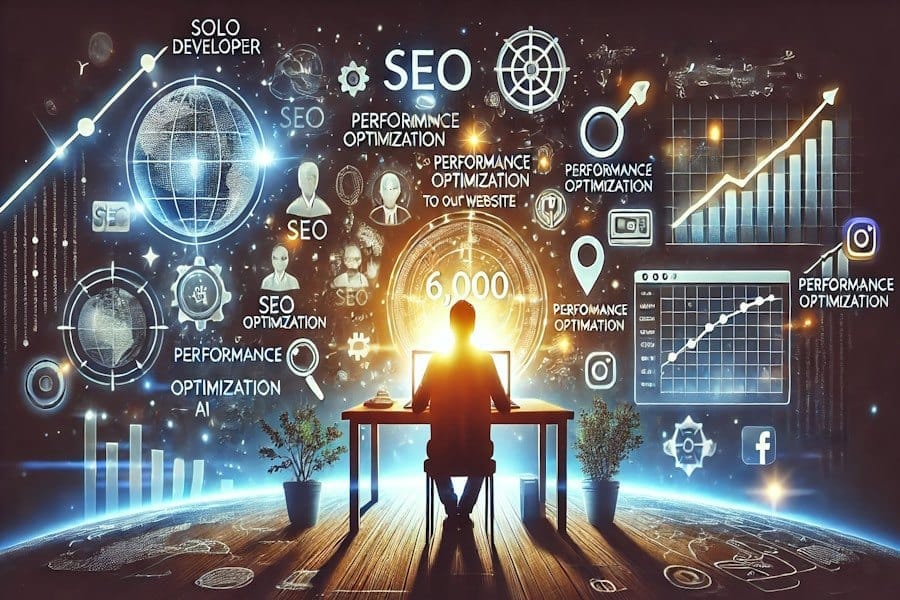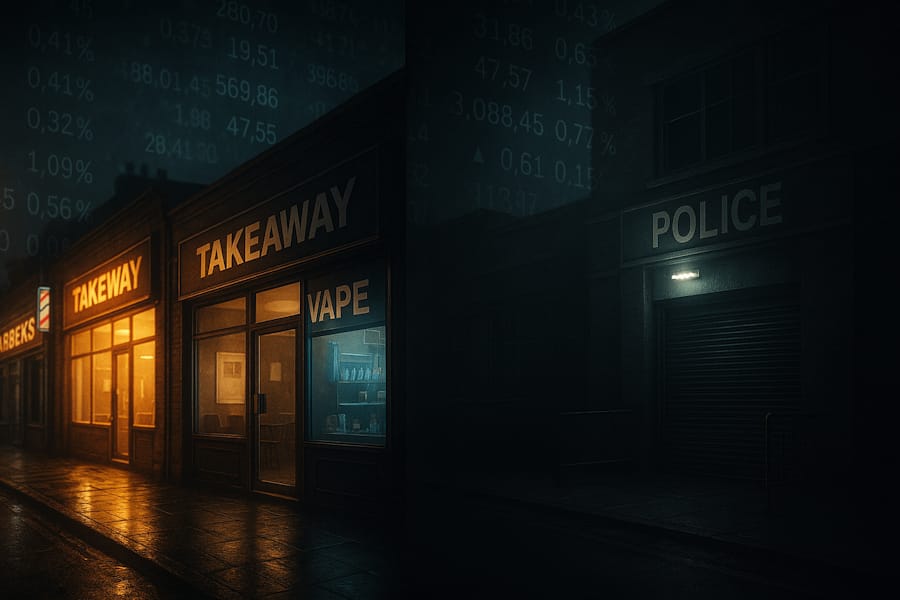Type: Article -> Category: AI Development
From Zero to 6,000 Visits in Two Months: My Journey of Building and Growing a CMS

Six months ago, I embarked on a journey to build my own content management system (CMS) using Node.js, JavaScript, HTML, and Mongoose. This project was not just a technical experiment; it was a deep dive into a new world of opportunities, challenges, and invaluable lessons. Moving from a PHP background to Node.js development wasn’t planned—it was a necessity driven by a project’s shift in technology. But what started as an obligation quickly became a revelation.
Why I Transitioned to Node.js
As a full-stack PHP developer, I was initially reluctant to switch to Node.js. However, the transition opened my eyes to some undeniable advantages:
- Unified Code Base: With JavaScript for both front-end and back-end, I could focus on a single language, reducing the cognitive load of switching between PHP and JavaScript.
- Streamlined Workflow: No more struggles with inconsistencies between server-side PHP and client-side JavaScript.
- Efficient Performance: Node.js provided faster server response times and lower resource usage compared to my local PHP/Apache setups.
- Improved Security: Features like private variables in modern Node.js versions brought enhanced security to my codebase.
Building the CMS with the help of AI and my PHP experience turned out to be the most enjoyable part of the journey. Little did I know, the real challenge would begin once the site went live.
The Real Challenge: Post-Launch Battles
Launching a website is like planting a seed—it takes constant care and attention to grow. Here’s what I faced after going live:
1. SEO and Search Engine Pitfalls
Without a strong search engine presence, attracting visitors is nearly impossible. But optimizing for SEO is fraught with hidden dangers:
- Minor mistakes, like poorly structured meta tags, can hurt rankings.
- Search engines may penalize your site without clear feedback, making recovery frustratingly difficult.
2. Performance Optimization
Page speed is critical for rankings and user experience. However, discrepancies between tools (e.g., one tool showing 5 seconds load time while my browser clocks in at 2 seconds) added layers of complexity. Optimizing image sizes, reducing CSS/JavaScript files, and tweaking server responses became routine tasks.
3. Social Media Algorithms
Social platforms present their own challenges:
- Algorithms often throttle posts that include external links.
- Warning messages about “potentially unsafe sites” can deter users, even if your site is secure.
4. Content Creation and Engagement
To retain visitors, fresh and relevant content is a must. Even with AI to assist, creating quality content remains time-consuming. Additionally, building a social media presence required active participation—liking, commenting, and engaging with others became part of my daily routine.
5. Bug Fixes and CMS Tweaks
No CMS is perfect at launch. Bugs, both obvious and subtle, popped up regularly. For example, small code changes sometimes affected SEO outputs, causing ripple effects I only noticed weeks later. Tweaks to features based on real-world usage also introduced new challenges.
6. Mental and Emotional Strain
It’s easy to feel overwhelmed. Low visitor numbers, endless optimization tasks, and slow monetization progress can dampen spirits. Staying disciplined and focusing on incremental progress became my lifeline.
Why 6,000 Visits in Two Months Is a Big Deal
In an online world dominated by mega-corporations and celebrities, achieving 6,000 visits in two months may seem small. But for a solo developer without a dedicated team, ad budget, or high-profile endorsements, it’s a major milestone.
Most small businesses struggle to attract even 10 visitors a day without extensive resources. My results were the product of relentless effort, constant learning, and a willingness to adapt.
Lessons Learned and Words of Encouragement
- Discipline Is Key: Success is a marathon, not a sprint. Taking things step by step and being open to learning will keep you moving forward.
- Embrace Challenges: Every obstacle is a chance to grow. Each bug, SEO tweak, or social media hurdle taught me something valuable.
- Leverage Today’s Tools: AI and the internet have democratized entrepreneurship. What used to require massive investments can now be achieved with determination, creativity, and minimal resources.
- Stay Patient: Rome wasn’t built in a day, and neither are thriving websites. Remember, persistence pays off.
A Final Thought
We live in a world full of opportunities that were unimaginable just a few decades ago. If you’re waiting for the “perfect time” to start something, it may never come. Take the leap, embrace the uncertainties, and remember: even if you don’t succeed, the knowledge and connections you gain are priceless. Doing nothing guarantees nothing; doing something opens doors you never knew existed.
Latest AI Articles
AI Questions and Answers section for From Zero to 6,000 Visits in Two Months: My Journey of Building and Growing a CMS
Welcome to a new feature where you can interact with our AI called Jeannie. You can ask her anything relating to this article. If this feature is available, you should see a small genie lamp above this text. Click on the lamp to start a chat or view the following questions that Jeannie has answered relating to From Zero to 6,000 Visits in Two Months: My Journey of Building and Growing a CMS.
Be the first to ask our Jeannie AI a question about this article
Look for the gold latern at the bottom right of your screen and click on it to enable Jeannie AI Chat.
Type: Article -> Category: AI Development










